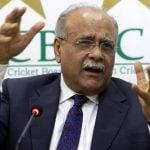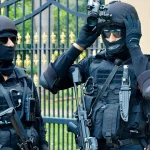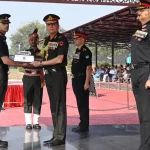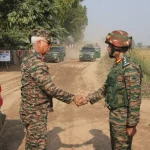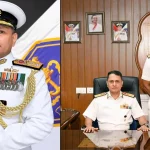Becoming a pilot in the Indian Navy is not just a career choice; it is a commitment to serve the nation while embracing one of the most challenging and exhilarating professions in the military. As a pilot, you will partake in critical missions that involve complex flying maneuvers, all while safeguarding the sovereignty of the seas and skies over India. This journey requires rigorous preparation, exceptional educational qualifications, steadfast physical fitness, and a passion for aviation.
In this comprehensive guide, we will detail the steps and requirements to become a pilot in the Indian Navy, including educational pathways, entry routes, the selection process, training procedures, and long-term career advantages.
Educational Requirements
The path to becoming a pilot in the Indian Navy is rigorous and is anchored on a solid educational foundation. Candidates are required to meet specific educational qualifications that prepare them for the technical and intellectual challenges of naval aviation.
- Bachelor’s Degree: Candidates are expected to possess a bachelor’s degree in engineering, physics, or mathematics. This foundational knowledge is crucial, as it helps aspiring pilots understand complex aviation technology, navigation systems, and aerodynamics.
- 10+2 Eligibility: For younger candidates, those who have completed their 10+2 education focusing on science subjects such as Physics and Mathematics can access certain entry routes.
- Graduation: Graduates need to achieve a minimum of 60% marks in their degree program to qualify for most entry routes into the Navy. This academic requirement ensures that candidates possess sufficient knowledge and skill to handle the technical aspects of flying.
Entry Paths into Naval Aviation
There are various pathways for aspiring pilots to join the Indian Navy, each catering to different educational backgrounds and age groups.
- National Defence Academy (NDA): The NDA is one of the premier institutions for training future leaders of the armed forces. Students aged 16.5 to 19 years can take the NDA examination after completing their 10+2 education. The NDA program encompasses three years of rigorous academic training combined with military instruction.
- Combined Defence Services (CDS) Exam: For graduates between 19 to 24 years of age, the CDS exam offers another route to join the Indian Naval Academy (INA). This written exam is followed by an SSB (Services Selection Board) interview to assess the candidates holistically.
- Indian Naval Academy (INA): Graduates can apply directly to the INA for naval officer training. This program provides comprehensive training, preparing individuals for various roles, including pilot duties.
- Indian Navy Entrance Test (INET): The INET is a computer-based test that evaluates candidates across four critical areas: English, Reasoning, Numerical Ability, and General Knowledge. Excelling in this assessment is vital for progressing to the next stage of the selection process.
- Short Service Commission (SSC): The Short Service Commission is targeted at technical graduates, indicating the Navy’s need for skilled personnel in various technical fields, including aviation.
Physical and Medical Standards
Once educational and entry requirements are met, candidates must undergo strict physical and medical assessments.
- Height and Weight: The Indian Navy has specific minimum and maximum height and weight standards. Generally, candidates must be a minimum height of 157 cm for men and 152 cm for women with corresponding weight that is proportional to height.
- Physical Fitness: An excellent level of physical fitness is essential. Candidates must demonstrate physical endurance and strength through various fitness tests, ensuring they can handle the demands of naval training and operations.
Allowances and Benefits of Being a Naval Pilot
Becoming a pilot in the Indian Navy comes with many benefits and allowances that enhance the overall package.
- Pilot Allowance: Post successful completion of training, pilots receive a pilot/NAOO allowance of Rs 31,250, acknowledging their specialized skills and responsibilities.
- Job Stability: The position of a pilot in the Indian Navy offers job security, given that it is a permanent role within a prestigious organization. Additionally, the nature of naval operations allows for numerous opportunities for advancement and specialization.
Recent Vacancies and Opportunities
As of February 2025, the Indian Navy has announced a total of 270 vacancies across various roles, including pilots and air traffic controllers. Key details include:
- Age Limit: The permissible age for applicants is between 18 to 24 years, with applicable age relaxation for reserved categories.
- Application Mode: Candidates interested in these positions must submit their applications online through the official recruitment portal.
Steps to Apply for a Naval Pilot Position
Understanding the application process is crucial for aspiring candidates. Here are the key steps:
- Read the Advertisement: Candidates should begin by carefully reviewing the job notification. This advertisement contains essential details about eligibility criteria, application deadlines, and any additional requirements.
- Prepare Documents: Preparation of necessary documents, including educational certificates, identification proofs, and medical records, is vital before applying.
- Apply Online: Submit the application through the official recruiting link before the deadline. Ensure that all information is accurate and complete.
- Submit Application Fee: If applicable, candidates should pay the necessary application fee within the stipulated time frame to ensure successful processing of their application.
Training Process for Naval Pilots
Upon selection, candidates undergo extensive training tailored to develop their skills as pilots. The training includes:
- Ground School: This phase covers theoretical aspects of aviation including navigation, meteorology, and aircraft systems.
- Simulator Training: Before getting into actual aircraft, candidates will practice in simulators, allowing for the development of flying skills without the risks associated with real flights.
- Flight Training: Candidates will take to the skies under the supervision of experienced instructors, where they will learn various flying techniques and maneuvers.
- Operational Training: Eventually, candidates will participate in more advanced missions, possibly including international engagements, to test and enhance their skills in real-world scenarios.
Eligibility for Specific Graduates
While many disciplines are eligible for pilot roles, some specific graduates like B.Sc. Biotech graduates may not find direct eligibility for pilot positions. Alternative roles within the Navy may be available, and candidates should explore these options depending on their qualifications.
Challenges of Becoming a Naval Pilot and Proposed Solutions
- Rigorous Selection Process: The intense physical and mental demands of the selection process can deter many candidates. Therefore, aspiring pilots should extensively prepare through physical training and mock tests to improve their candidacy.
- High Educational Standards: The requirement for high academic scores can be challenging. Candidates must seek guidance, potentially through coaching centers or study groups, to enhance their performance in required exams such as NDA, CDS, or INET.
- Continuous Training Demands: The Navy requires pilots to engage in lifelong training and development due to evolving technology and operational requirements. This necessitates a constant commitment to learning, which could be challenging but is essential for career advancement.
Future Trends and Predictions for Naval Aviation
As technology progresses, the field of naval aviation is likely to see significant advancements. Expected trends include:
- Integration of AI and Drones: Increasing reliance on unmanned aerial systems (UAS) will transform operations. Future pilots may need to learn how to coordinate multiple aircraft types, including drones, enhancing their operational capabilities.
- Sustainability: The Navy may adopt sustainable flying practices and technologies to minimize environmental impacts, advancing the dialogue around aviation’s role in combatting climate change.
- International Collaboration: With global tensions sometimes fluctuating, increased joint exercises and training with other navies may become the norm, broadening the scope of experience for naval pilots.
Conclusion
In summary, becoming a pilot in the Indian Navy is a process that encompasses stringent educational requirements, physical assessments, and extensive training. The career not only offers a secure job with numerous benefits but also allows individuals to serve their country while engaging in one of the most exciting professions available. For aspiring candidates, the journey demands hard work and commitment, but the reward of flying for one of the most prestigious organizations in the country makes it a worthwhile pursuit.
As you take your first steps toward this illustrious career, remember the importance of preparation—stay physically fit, aim for excellent academic performance, and go through mock training sessions to bolster your chances. With persistence and dedication, you could be soaring the skies as a pilot, contributing to the security and power of the Indian Navy. Embrace the challenge and begin your journey today!








